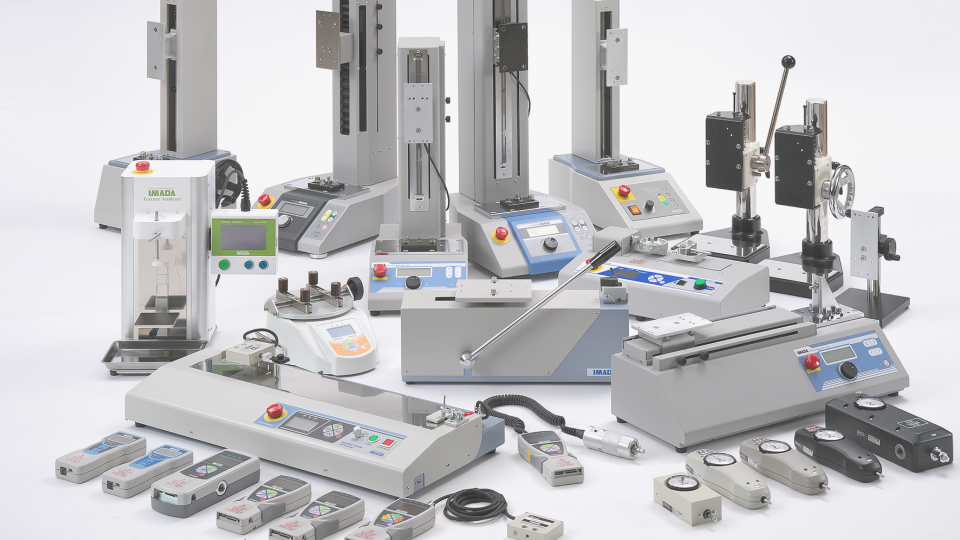We will delve into the evaluation of switch characteristics, with a particular focus on click feel.
What Is Click Feel?
Click feel, for example, is the sensation when you press a switch on a PC mouse or keyboard and feel that “click” as the switch activates. It’s the tactile feedback when you press the switch. More technically, it refers to the moment when the spring’s elasticity gives in, and the contact point is engaged.
The Role of Click Feel: When Is It Beneficial?
Many people own touchscreen devices such as tablets and smartphones, but when large amounts of text inputs are required, conventional keyboards are preferred. One reason for this is the “click feel” provided by traditional keyboards.
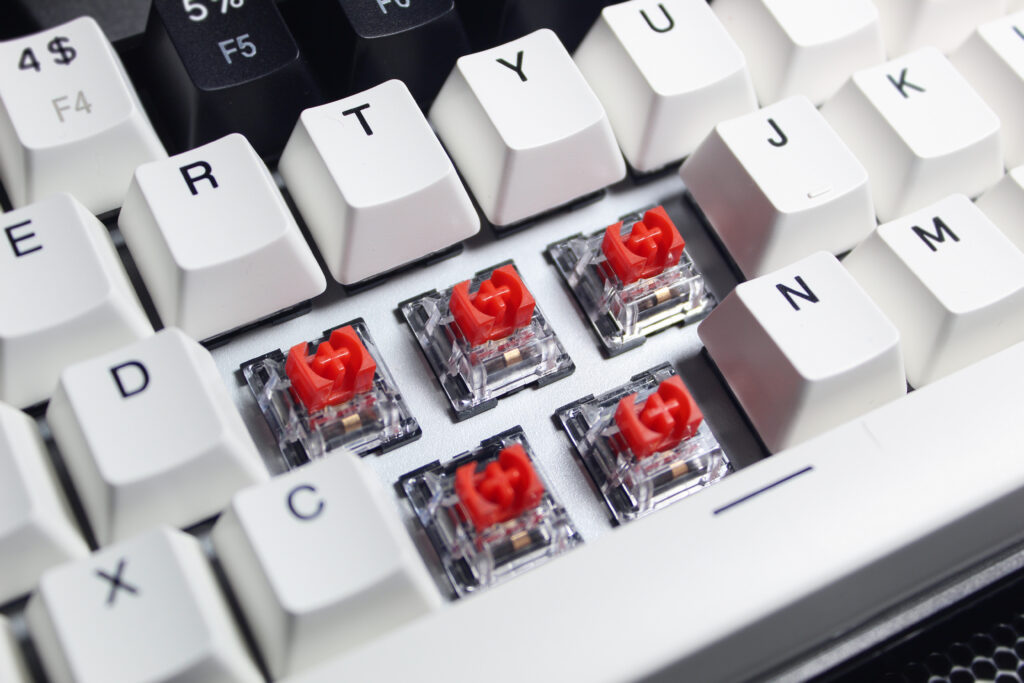
Touchscreen keyboards have flat surfaces, lacking the tactile sensation or click feel of traditional keyboards. This makes it challenging to determine if key is being pressed accurately and increases the risk of accidentally touching neighboring key. In the end, you’ll need to input while looking at the keyboard, which decreases usability.
To compensate for this inconvenience, some touchscreen devices change color or produce sounds to simulate a click feel. This is essentially compensating for the lack of click feel in touchscreen devices, highlighting the importance of click feel.
However, conventional keyboards and switches offer benefits that touchscreen devices cannot fully cover, even with color changes and sounds that simulate a click feel.
Situations Where the Importance of Click Feel Is Evident
> In situations where users wear gloves: Such as in manufacturing or the medical fields, conventional keyboards and switches are more reliable. Touchscreens often fail to respond to gloved fingers. With click feel, you can confidently press keys even while wearing gloves.
> When you want to avoid accidental switch presses: Touchscreen switches may respond to unintended touches, and it’s difficult to notice without looking at the screen. Reliance on sound or color changes to indicate a switch press may be less effective in ambient noise or brightness , and it can also be triggered by moisture, oil, dust, and other contaminants. Conventional keyboards can detect incorrect operations through click feel, reducing the chances of false activations.
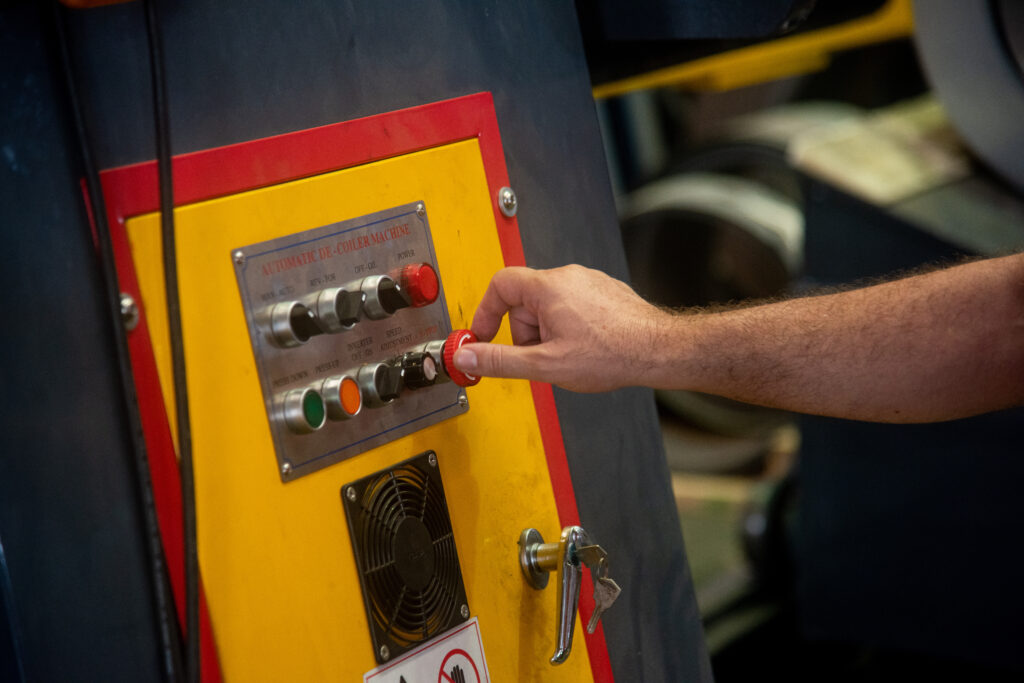
Therefore, click feel is a crucial element for accurate and reliable operations. However, it’s not a case of “the more click feel, the better.” The ideal click feel and the effort required to feel it should be optimizedto the specific situation (e.g., an emergency stop switch might benefit from a harder-to-press switch with a strong click feel, while a keyboard switch might work best with a relatively light press and a less pronounced click feel).
Switches that are too hard or too soft to press, or switches with excessive or insufficient click feel, can diminish the quality of the product. In premium products like high-end cars, the feel and click response of the switches contribute to the brand’s image, which is why they are meticulously measured and managed.
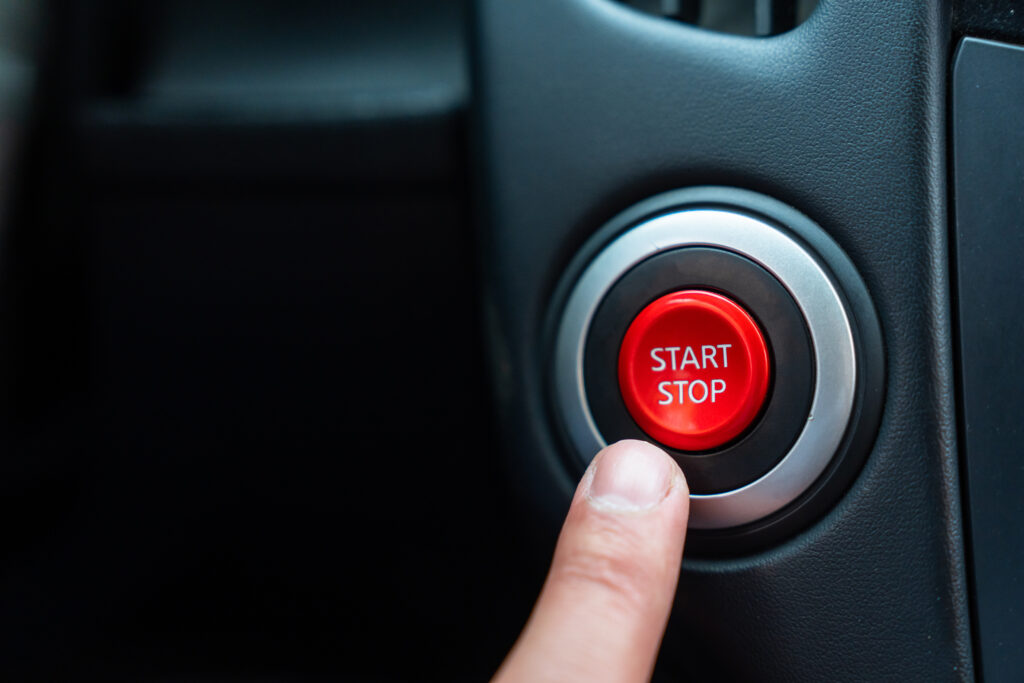
Evaluating the tactile feel of pressing a switch, along with click feel, is essential for manufacturing user-friendly and high-quality products.
How to Measure Switch Click Feel and Tactile Feel
To measure click feel and tactile feel, a force gauge, an instrument that quantifies “force,” is used. Why use a “force” measuring device? It’s because tactile feel essentially corresponds to the “rebound force” of the switch. As rebound force increases, pressing becomes harder and the switch feels stiffer, whereas lower rebound force allows for easier pressing.
Click feel corresponds to the moment when the spring’s elasticity gives way, and the rebound force drops. Measuring this force helps reveal the switch’s characteristics.
In practice, switches are pressed with a force gauge, and the rebound force is quantified.
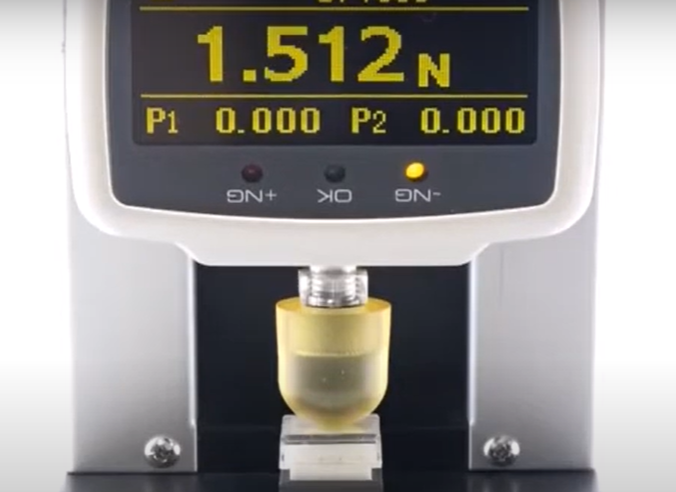
Displacement (distance) is predetermined, and the switch is pressed that exact amount. The relationship between force and displacement is graphed to reveal the switch’s characteristics. Please refer to the video below for a demonstration of the equipment in use and an actual measurement in action.
Detection measurements of the ON/OFF points can also be performed to check if the perceived click feel matches the actual switch activation.
Interpreting Data
The graph presents results of pressing three different switches in terms of force and displacement. The vertical axis represents force, and the horizontal axis represents displacement.
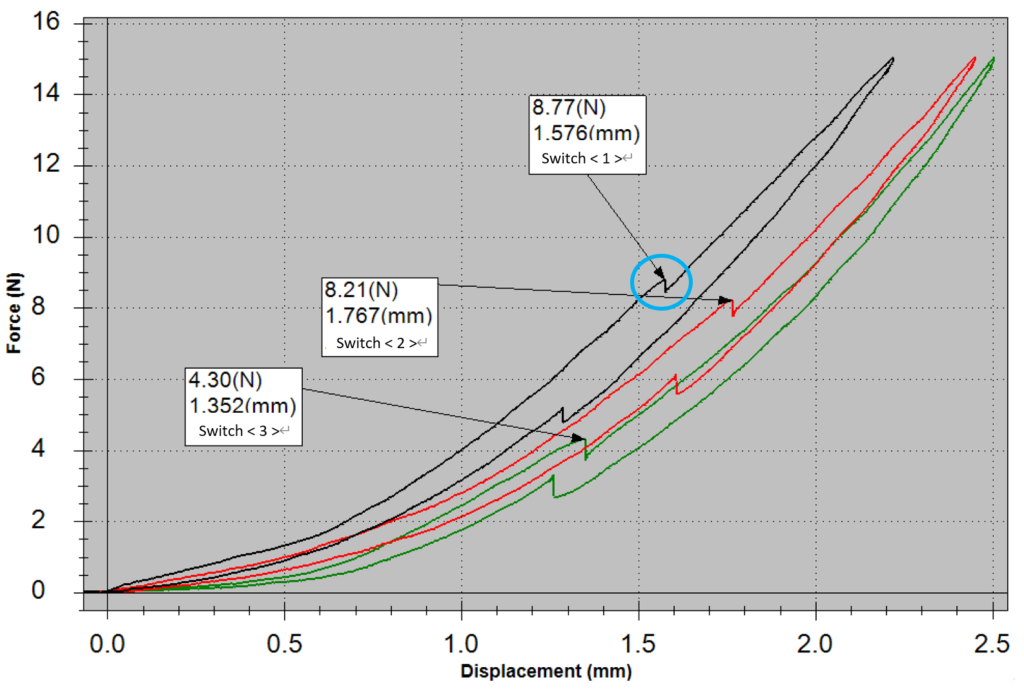
Reading the example of the black curve (Switch < 1 >):
- Click feel is visualized on the graph. It’s depicted in the blue circular area, where the force value drops rapidly. This sharp decline in force is known as the “bump.”
- The actuation force to reach the click feel is 8.77N, with a distance of 1.576mm..
- The return click feel can also be observed.
- The horizontal axis is based on displacement rather than time, which shows hysteresis (the return effect). In terms of the switch’s characteristics, stronger rebound forces lead to a tactile sensation of pushing the finger back.
While the graph reveals the characteristics of click feel, evaluating whether it is good or bad involves comparing it with qualitative data and other factors.
> For example, the graph of Switch < 1 > indicates that a force of 8.77N is required to reach the click feel. If there are negative qualitative evaluations such as “stiff” or “difficult to press,” it may be necessary to shift the click feel lower in the graph. “Stiff” or “difficult to press” implies that the switch’s rebound force is higher than expected, which may make it necessary to reduce the maximum force required to reach the click feel.
> Similarly, the switch < 1 > exhibits a click feel after being pressed 1.576mm. If the switch receives negative qualitative evaluations like “slow response,” the click feel may need to occur at an earlier stage in the graph. “Slow response” suggests that the distance to reach the click feel may be too long, making users feel that way. Thus, it may be necessary to shorten the distance to the click feel.
The shape of the curve on the graph and the depth of the click feel, represented by the bump, may vary from one switch to another. Ultimately, what constitutes a good tactile feel and click feel can vary depending on the definition, so there is no one-size-fits-all answer.
Key Points When Actually Measuring
When conducting measurements, it is recommended to use a force gauge and graph-drawing software with a high sampling rate. The sampling rate refers to the speed at which measurement values are acquired. A higher sampling rate, such as 2000Hz, means you can obtain 2000 measurements per second. A lower rate, like 50Hz, would provide 50 measurements per second.
As mentioned earlier, click feel is about capturing a momentary drop in force value (the bump). A slow sampling rate can result in missing this moment. Since measuring click feel requires graphing the measurements, even if the force gauge has a fast sampling rate, it is important for the graphing software to match it. Depending on the combination of manufacturers and products, the force gauge’s sampling rate may be 1000Hz, while the graphing rate may be 50Hz, so product selection should be done carefully. Faster sampling rates for both are ideal.
Examples of Click Feel Measurement Instruments
For examples of equipment used in measuring click feel, please refer to this:



